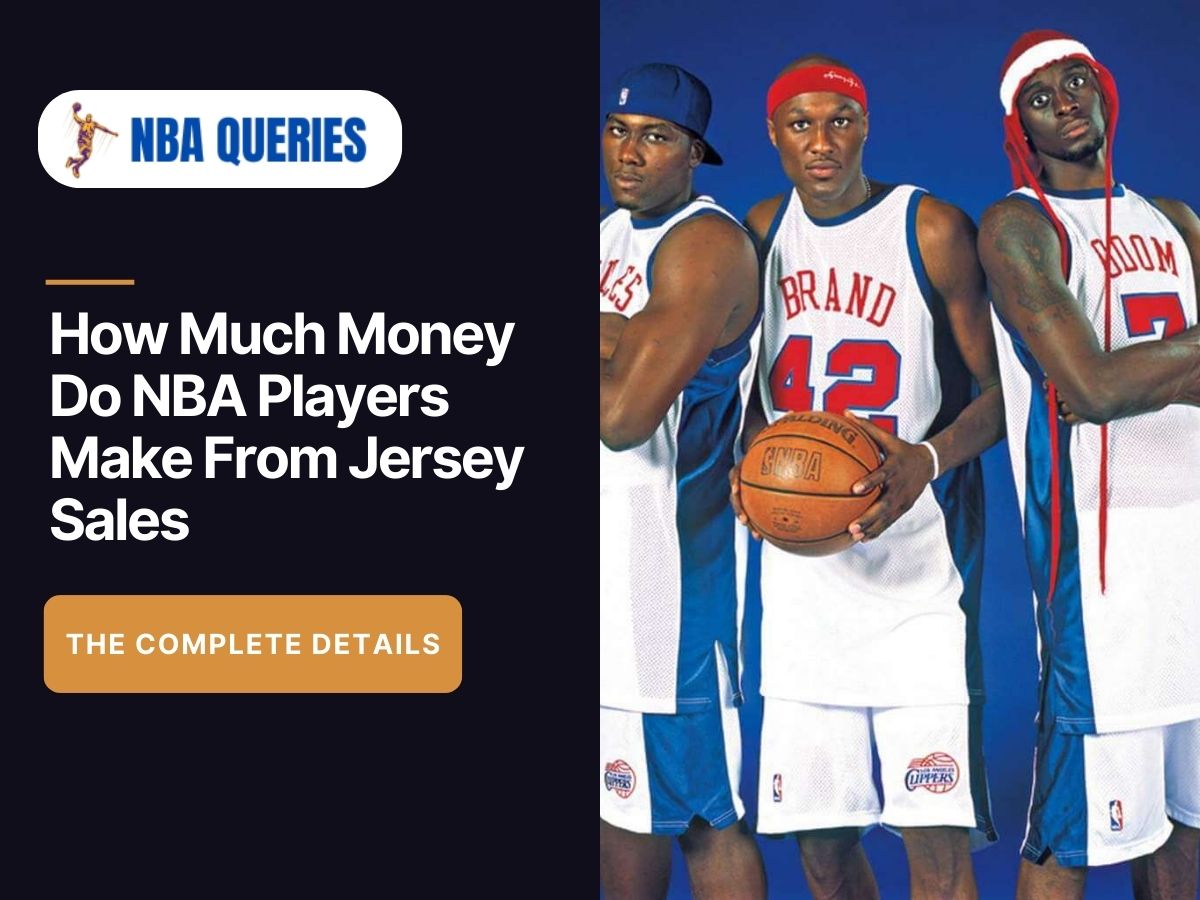The NBA, a global colossus in sports entertainment, not only captivates millions of fans with its on-court action but also generates significant revenue through merchandise sales, particularly player jerseys. This article delves into the mechanics and implications of NBA players’ income from jersey sales, presenting a comprehensive analysis to understand the financial dynamics at play.
How Much Money Do NBA Players Make From Jersey Sales?
Revenue Distribution Through Basketball Related Income (BRI)
NBA players’ earnings from jersey sales are part of a broader financial structure known as Basketball Related Income (BRI). The revenue from jersey sales contributes to the BRI, which is shared between players and team owners. This income indirectly affects the salary cap, benefiting all players by increasing the pool of money available for salaries. Players receive about 45% of the revenue from jersey sales, but this amount is integrated into the overall BRI rather than being paid out directly.
The Role of Popularity in Jersey Sales
The popularity of a player significantly impacts their contribution to jersey sales. Superstars like LeBron James, Stephen Curry, and Kevin Durant frequently top the list of best-selling jerseys. Their high visibility and fan following drive merchandise sales, which in turn boosts the BRI and, consequently, their earnings. For instance, during the 2023-2024 season, Stephen Curry, Jayson Tatum, and LeBron James were the top sellers, demonstrating their substantial impact on merchandise revenue.
Comparison with Other Sports Leagues
The NBA’s approach to distributing revenue from jersey sales differs from other major sports leagues like the NFL, MLB, and NHL. In these leagues, players’ associations negotiate separate licensing agreements that can result in direct payments to players from merchandise sales. In contrast, the NBA’s system ensures that all players receive a portion of the income through the BRI, promoting financial equity among players and teams.
Impact on Player Earnings
While exact figures are difficult to pin down due to confidentiality clauses in player contracts, it’s understood that jersey sales form a component of the broader BRI. This means that, while players do benefit from their jerseys being sold, the income from these sales is bundled into their overall compensation package rather than paid out as separate, direct earnings from each sale.
Comparing with Other Leagues
The NBA’s model of distributing revenue from merchandise sales is unique compared to other major sports leagues in the US. In leagues like the NFL, MLB, and NHL, players’ associations negotiate their own licensing agreements, which can include direct payments from jersey sales. In contrast, the NBA’s approach ensures that all players receive a portion of the income, albeit indirectly through the salary cap and BRI.
Notable Cases and Trends
Historically, few players have opted out of the NBA’s group licensing agreement, with Michael Jordan being a notable exception in 1992. Since then, the agreement has been strictly enforced, ensuring equitable distribution among players.
Read: Do NBA Jerseys Shrink? The Complete Guide
Top Jersey Sellers and Their Impact
The popularity of NBA jerseys continues to soar, with LeBron James, Giannis Antetokounmpo, and Kevin Durant leading the pack in recent seasons. The list of top sellers often reflects the league’s most marketable and successful athletes, underlining the strong connection between on-court performance and off-court earnings potential, even if the direct financial benefits are integrated into the overall BRI.
Maximizing Merchandise Revenue
NBA players’ influence extends beyond the basketball court, impacting merchandise sales significantly. The league capitalizes on this by ensuring that jersey sales contribute to Basketball Related Income (BRI), which in turn affects players’ salaries. This model promotes a symbiotic relationship between the league’s popularity and the players’ financial well-being.
The Global Marketplace
The NBA’s global reach amplifies the impact of jersey sales, turning local stars into international icons. This global market is crucial for maximizing merchandise revenue, with the NBA’s most popular jerseys often belonging to players with a strong international following. As the league continues to expand its global footprint, the income from jersey sales will likely become an even more significant factor in the overall revenue mix.
Pricing Strategies and Fan Engagement
The cost of NBA jerseys varies, reflecting different styles and player popularity. Fans are willing to pay a premium for authentic jerseys of their favorite players, demonstrating the strong connection between fan engagement and merchandise sales. This willingness to purchase expensive merchandise is a testament to the deep emotional connection fans have with the players and the game.
Revenue Sharing Among Teams
The NBA’s revenue-sharing model ensures that all teams benefit from merchandise sales, not just those with the most popular jerseys. This approach fosters a sense of financial equity among teams, enabling smaller market teams to remain competitive. The equal distribution of jersey sales revenue among teams is a key component of the league’s financial health and competitive balance.
The Future of NBA Merchandise Sales
Looking ahead, technological advancements and evolving fan behaviors will likely influence the future of NBA merchandise sales. The league’s ability to adapt to these changes, such as embracing e-commerce and digital marketplaces, will be crucial in maintaining and growing jersey sales revenue. Furthermore, personalized and limited edition jerseys could become a larger part of the merchandise mix, offering new opportunities for revenue growth and fan engagement.
Last Words
NBA players’ income from jersey sales is a complex interplay of league policies, player popularity, and global market dynamics. While direct earnings from jersey sales may not be substantial for each player, the collective benefit contributes significantly to the league’s financial structure and players’ salaries

